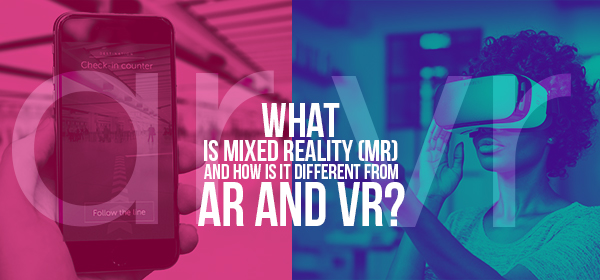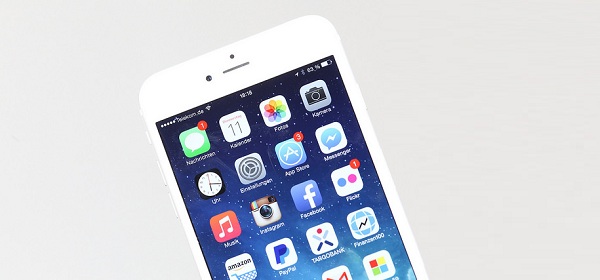After experiencing the imaginative power of virtual world through mobile games, AR (Augmented Reality) and VR (Virtual Reality) are getting more organized to offer streamlines solutions to various industries. As these technologies break the surface of traditional approach towards the way we experience physical world in surroundings, the era of new realities begin. VR has grown more mature since its inception to produce more real sensations while AR continues to virtual objects to real world environment.
But the future is turning to Mixed Reality (MR) that enables the best of virtual and augmented world. Through the convincing entanglement of AR and VR in MR, you can play virtual games with characters that can interact with your real-world environment. However, due to the puzzling amount of technologies hitting you hard, it is important to discriminate these different reality-based technologies. Let’s delve into the subject to learn more.
Introducing different realities at a glance
1) Real-world environment
The real world environment is the one in which we all live and exist and is usually understood as the natural or physical world. Most of the things you experience in natural environment are either tangible or perceptible. The creations of virtual environment is often inspired by the representations of real physical world in a new, more comprehensive or amusing format that involves people, landscapes, civilizations, and other integral aspects.
2) Mixed Reality (MR)
Mixed reality is composed of technological spectrum of multiple realities enhanced by independent technologies like VR and AR. Mixed reality can be best explained as virtual spaces in which real world environment or people are actively integrated into virtual environment to produce a unique space of visuals where both physical and digital objects seems to interact seamlessly in teal time.
Unlike VR, MR provides you with much controlled, fascinating experience that blends real and digital elements so that you can manipulate and interact with real and virtual objects or environments using powerful imaging and sensing technology.
3) Virtual reality
Virtual reality can be enabled as computer generated graphics, video, music to create vivid experience in your senses. VR can be an umbrella term for all virtual reality experiences that are not completely real. Being the most known technology, Virtual Reality can offer immersive, intuitive and tricky experience that makes you believe you are actually exploring a completely different world from the one you live in. It has HMD (Head Mounted Display) or headset tethered to the PC or console.
VR delivers deep level of immersion, a total escape into strange, impossible world that engages and stimulate all of users’ senses in a way that makes them forget the actual reality in their vicinity.
4) Augmented Reality
Augmented Reality, as the phrase suggests, augments the intensity of reality by overlaying the ready digital graphics in real-world elements to produce the experience where users can enjoy some aspects of virtual world right into their physical world. The most suitable example that embodies AR technology would be the most renowned mobile game Pokémon GO. The main principle around which the concept of AR revolves is the idea of keeping the real world in the centre while enhancing its appearance through supplements of digital details and new perceptions.
The differences that separate MR from VR and AR
Although sometimes reality technologies seem to appear similar, the real-time applications and potential of MR separate it from other technology-enabled realities.
- Mixed reality contains hybrid configurations
Mixed reality is hybrid of multiple realities that encompass various creative configurations of augmented reality, real environment and augmented virtuality. Mixed reality is where users simultaneously explore real and virtual environments, navigating it without telling which is real and which is imaginary.
- Mixed reality offers more immersive interactions
Mixed reality makes it possible for you to immerse yourself in the physical world while interacting with a virtual environment. As a result, mixed reality users tend to forget where they are even though they constantly remain in actual world.
- Mixed reality creates more balanced environment
By combining the aspects of both AR and VR, mixed reality enables users to enjoy the balanced environment where users can have one hand in the virtual reality and can have it in the digital path and the other in the digital imagery, ultimately transforming the way you interact, work and play games.
- Mixed reality is not entirely virtual
Unlike virtual reality that drives exclusively virtual experience, MR creates unparalleled space where virtual objects are properly harnessed to augment the real world elements to a convincing extent. Hence, what you get eventually is not entirely virtual or completely real, still making users believe the spurious nature of digital interactions.
- Mixed reality offers more intuitive manipulations
Because you can play and try so many options with mixed reality, users can engage in more variations of similar objects and better chance of intuitive manipulations. For instance, you can see objects in its varied sizes as you change your perspectives and distance from it.
Finally, how MR stands out as a versatile reality?
It is easy to get perplexed about understanding the role of mixed realities among other types of realities especially when it is the cohesion of intermingled technologies. However, the way MR works adds clarity to how MR functions differently. In mixed reality, your physical environment is scanned to generate a 3D map-like structure of your surroundings.
Due to MR technology, device gets smart enough to understand what goes where, and how to place the digital contents in realistic backgrounds. Thus, MR allows users to interact with mixed, digitally-powered realities using human gestures without losing touch with their physical environment, eventually emerging as a versatile reality technology.
Conclusion:
After maturations and increasing adoptions of virtual and augmented realities, the border between real world environment and virtual space has blurred and faded away, developing the new innovation called Mixed Reality. By offering breathtaking experience to users, MR technology continues to create unique environment where user experiences resemble the visuals exhibited in sci-fi movies. Since they are accessible to everyone, many companies show sincere interest and invest in developing MR-based solutions. MR still needs more attention and awareness. We hope to see more in the area of mixed realities in future.

